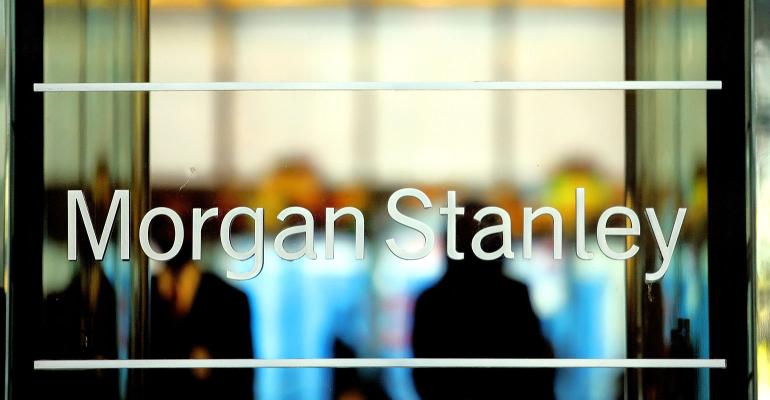Morgan Stanley will pay nearly $1.7 million in restitution for charging excessive fees in some 529 college savings plans, according to FINRA. The settlement is the first action springing from the regulatory agency’s 2019 initiative that allowed firms to voluntarily disclose lapses in their supervision of share class recommendations of 529 plans to avoid potentially harsher penalties or fines, and the agency cited Morgan Stanley's "extraordinary cooperation" in coming forward with the lapses.
The agency's self-reporting initiative was announced in January 2019, with a deadline of April of that year. Firms were encouraged to assess how they supervised recommendations for certain share classes in 529 plans, accounts designed to help investors save for educational expenses and often come with significant tax benefits. Jessica Hopper, an executive vice president and head of FINRA’s Enforcement Department, said the purpose of the initiative was to “remedy potential supervisory and suitability violations” to return money to affected investors as quickly as possible.
The agreement with Morgan Stanley was one of two settlements with firms, as well as an additional “17 matters resolved through cautionary action letters." More settlements are expected.
“We are very pleased with the substantial progress made thus far, and encouraged by the level of cooperation of member firms that self-reported, and expect to resolve the remaining matters in the coming year,” she said.
In a letter of acceptance, waiver and consent filed on Dec. 23, FINRA alleged that Morgan Stanley lacked systems to supervise representatives' recommendations of share classes of 529 savings plans between Jan. 1, 2013 and June 30, 2018. Share classes in a particular plan may not differ much in terms of their investment objectives but could substantially differ in their fee structures. For example, Class A shares tend to impose a front-end sales charge with lower annual fees, while Class C shares often lack a front-end charge but make up for it with higher yearly fees. In many (though not all) cases, Class A shares tend to be better options for younger beneficiaries with longer investment horizons, according to FINRA.
During the time in question, Morgan Stanley was a broker/dealer for 35 state-sponsored 529 plans, with about $11 billion in assets being held in plan accounts, according to FINRA. To supervise share class recommendations, the firm reportedly established a set of pre-determined suitability guidelines called “grids.” According to FINRA, the grids took numerous factors into account, including fees, the age of the beneficiary and the expected holding period. In many cases, share class recommendations were automatically compared to the grids, while some were compared manually, but if a recommendation didn’t line up with the guidelines, it was meant to be scrutinized further, according to FINRA.
But there were lapses in this supervision. Morgan Stanley reported that numerous accounts that were originally at Smith Barney before that firm merged with Morgan Stanley in 2012 were not integrated into the acquirer's order entry and account systems until 2016. This meant that 529 plan recommendations and purchases conducted in the Smith Barney accounts were not being measured against Morgan Stanley’s pre-determined grids, FINRA stated. Additionally, while Morgan Stanley prohibited 529 plan transactions outside of its own electronic order entry and account systems, the firm didn’t have a system in place to enforce that mandate, according to FINRA.
“As a result of these gaps in Morgan Stanley’s supervisory system, over $180 million of 529 plan Class C share purchases were not subjected to the firm’s grids during the relevant period and were inconsistent with the share-class suggested by the firm’s grids,” the letter read. “These purchases should have been, but were not, subject to further supervisory review under the firm’s procedures.”
In response to the settlement, a Morgan Stanley spokesperson said the firm was "pleased to have resolved this matter."
FINRA cited Morgan Stanley’s “extraordinary cooperation,” writing in the letter that the firm had conducted a review of its recommendations, self-reported the areas where they found deficiencies and provided necessary additional information. The firm’s $1.7 million in restitution and interest would affect 2,293 total accounts, though Morgan Stanley did not have to admit or deny any of the findings as a result of the agreement.
The self-reporting initiative mirrors a similar endeavor at the SEC concerning firms’ recommendations of investments in certain share classes of mutual funds that were not suitable for clients. The Commission’s final actions related to its own self-reporting period on mutual fund share classes were announced last April.
In a video released when FINRA’s self-reporting initiative was first announced, Susan Schroeder, who was then head of the enforcement division, said the approach would encourage firms to avoid additional fines. However, there could be consequences if a firm failed to self-report.
“If FINRA identifies that a firm has a supervisory issue, (and) the firm chose not to participate in this initiative, (and) if that supervisory violation develops into a formal action, Enforcement would recommend a sanction greater than the sanctions that we’re recommending under the initiative,” she said.
In addition to the Morgan Stanley settlement, B. Riley Wealth Management, a Memphis, Tenn.-based FINRA member firm, agreed to pay about $250,000 in restitution and interest as a result of self-reporting issues with supervising their 529 plan share class recommendations. According to FINRA, the firm failed to provide “adequate guidance” for representatives making such recommendations and lacked a system that would supervise those purchases. The firm reportedly failed to “conduct a reasonable supervisory review” for at least 3,119 accounts between the start of 2013 and June 2018, including about 620 accounts with beneficiaries who were under 12 years old, according to the letter of acceptance, waiver and consent filed by the regulatory agency.





